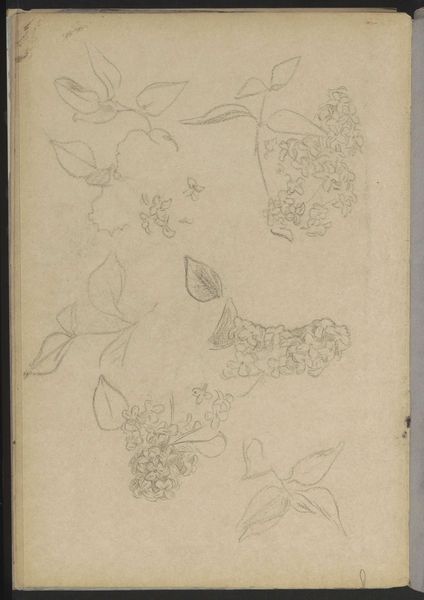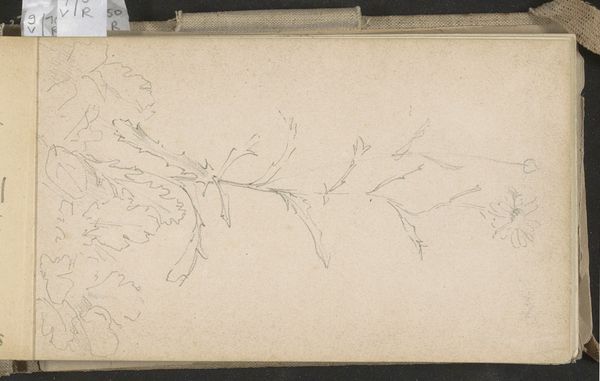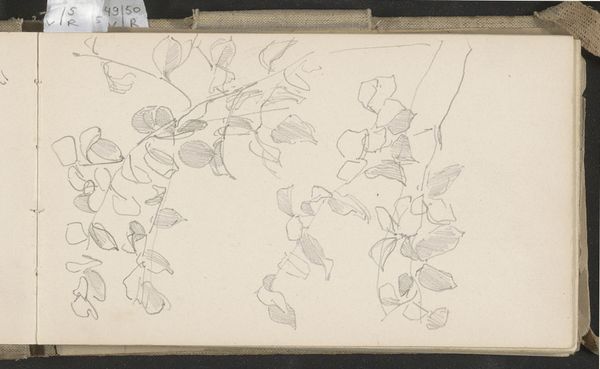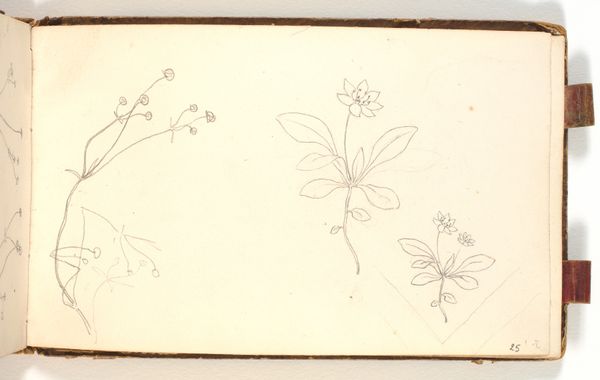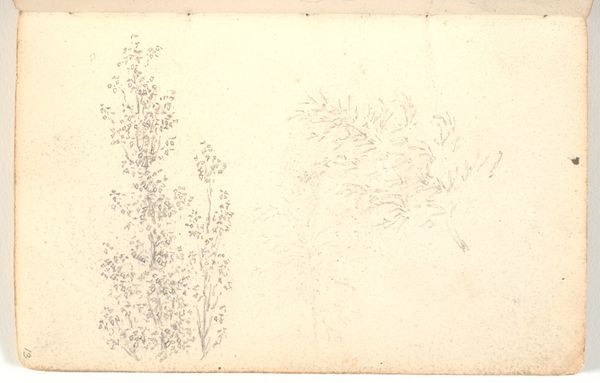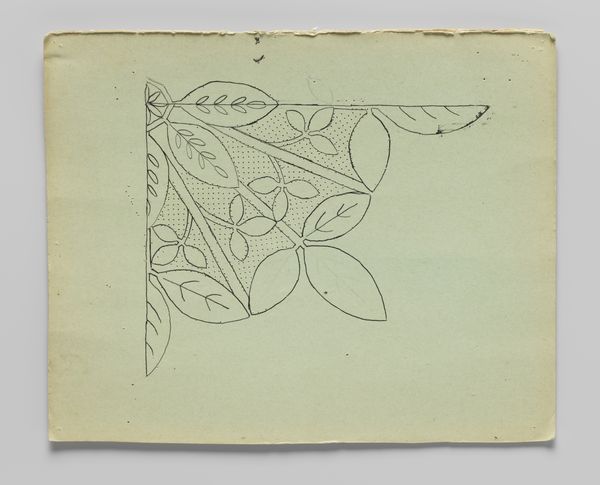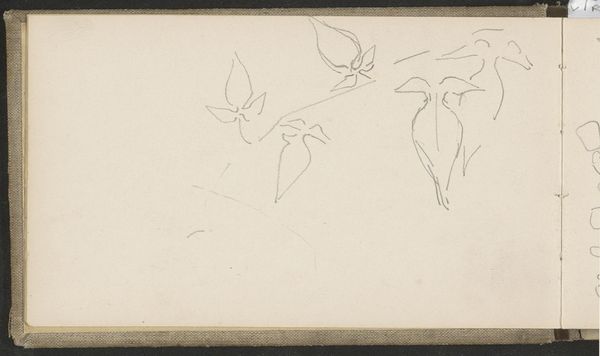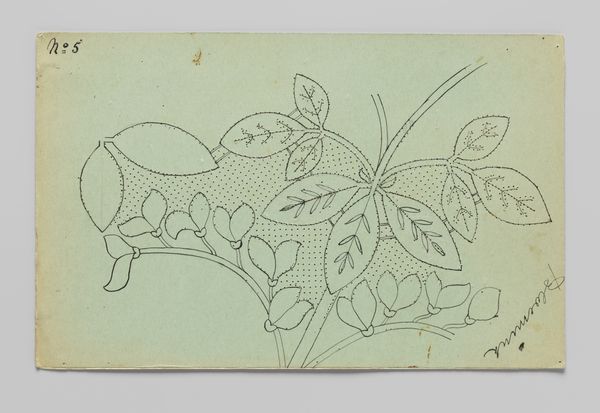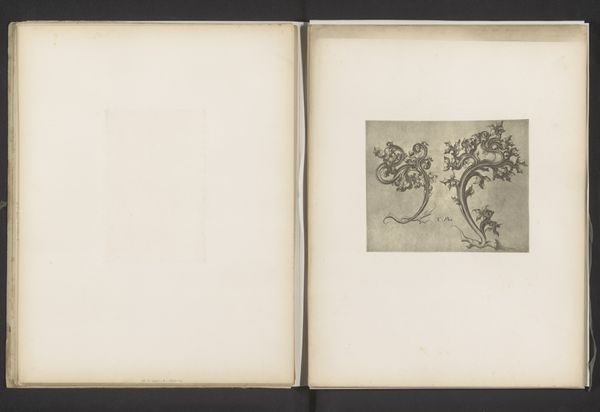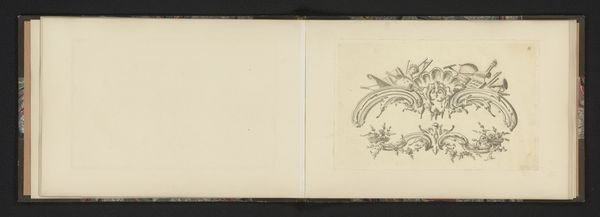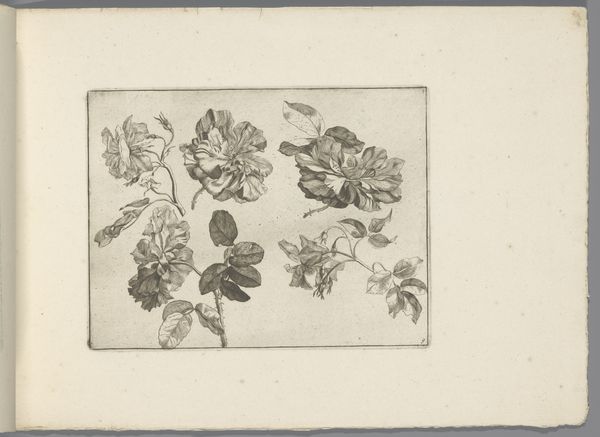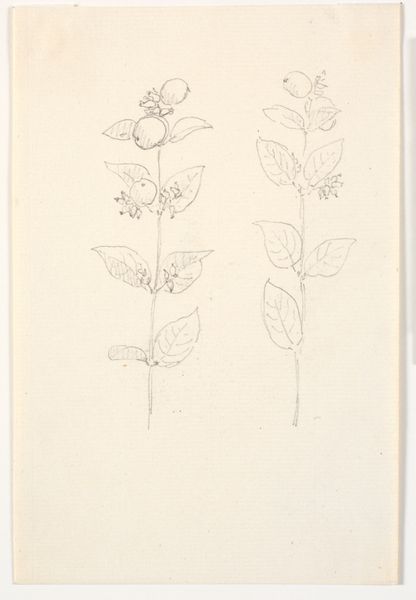
Copyright: Rijks Museum: Open Domain
Editor: This drawing, “Tak met handnervige bladeren,” or "Branch with Palmate Leaves," by Antoon Derkinderen, was created sometime between 1892 and 1901, using pencil on paper. There’s a gentle, almost wistful quality to the lines; the shapes are softly rendered and feel very organic. How do you interpret this work, what catches your eye? Curator: What whispers to me are the unseen stories within those delicate lines, that gossamer web. Derkinderen wasn't just sketching leaves, he was flirting with essence. Doesn't it feel like a secret language of nature revealed? A glimpse of life’s fragile beauty held still for a fleeting moment. And the stark simplicity begs the question – what is more difficult: embellishment, or quiet reduction? Editor: I suppose stripping something down to its essence requires a deep understanding. The space around the leaves becomes just as important as the leaves themselves. Curator: Exactly! The negative space is practically vibrating with potential. And the choice of pencil – raw, unadorned, elemental. It speaks to the honesty of the artistic process itself. Ever wonder what artists omit? Is it about simplification, or some even deeper form of confession? Perhaps that’s a question for another day, yes? Editor: Definitely. I’m starting to see how much more there is beyond the initial image – it’s not *just* leaves. Curator: Precisely, my friend. It’s a portal. Art isn't *just* what we see. Art becomes what we allow ourselves to feel when looking, when remembering the art that is and can be.
Comments
No comments
Be the first to comment and join the conversation on the ultimate creative platform.
